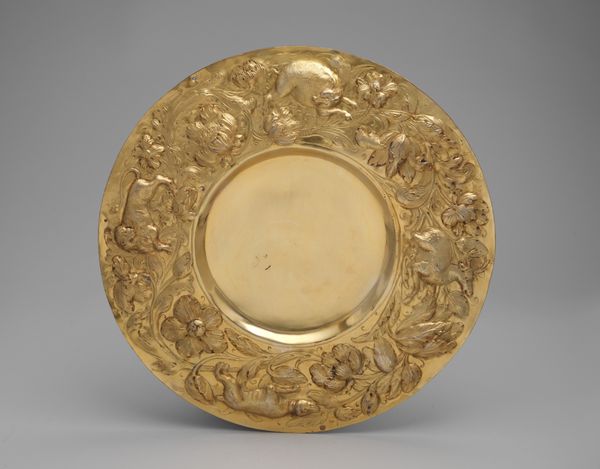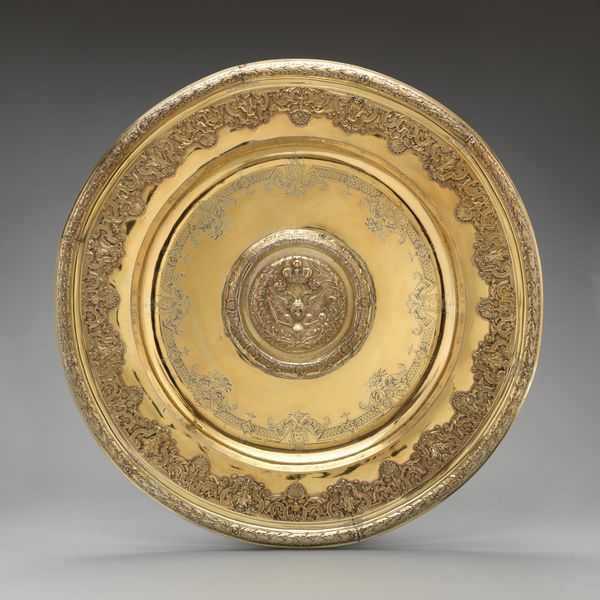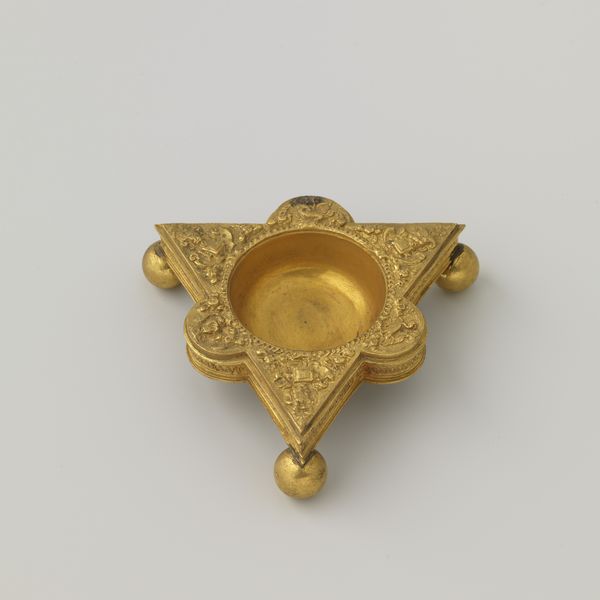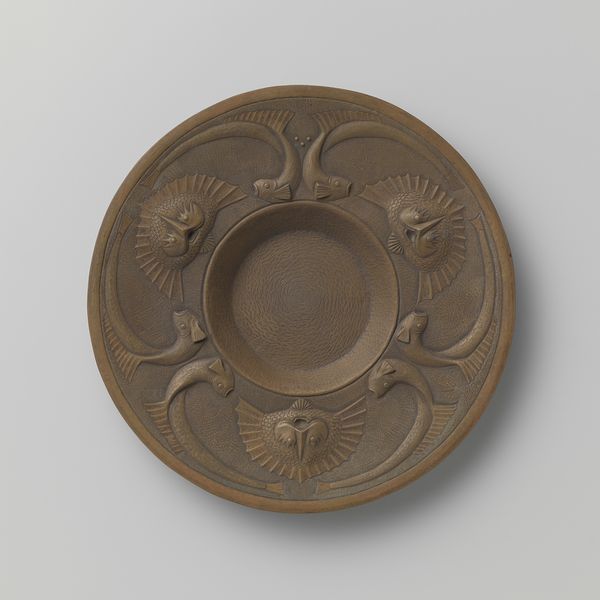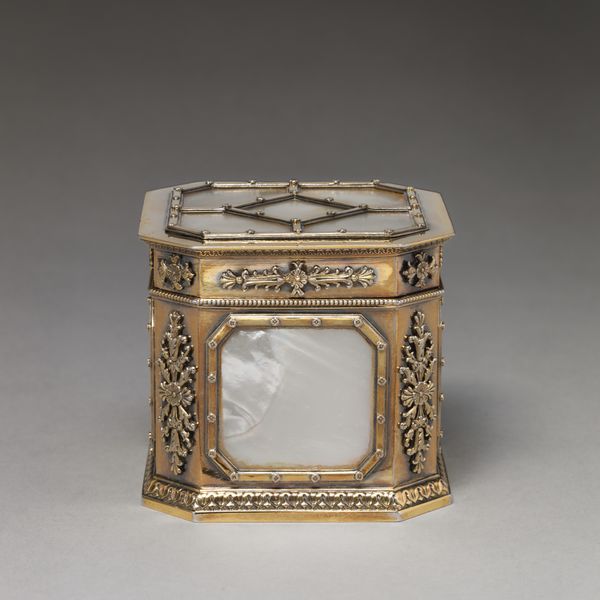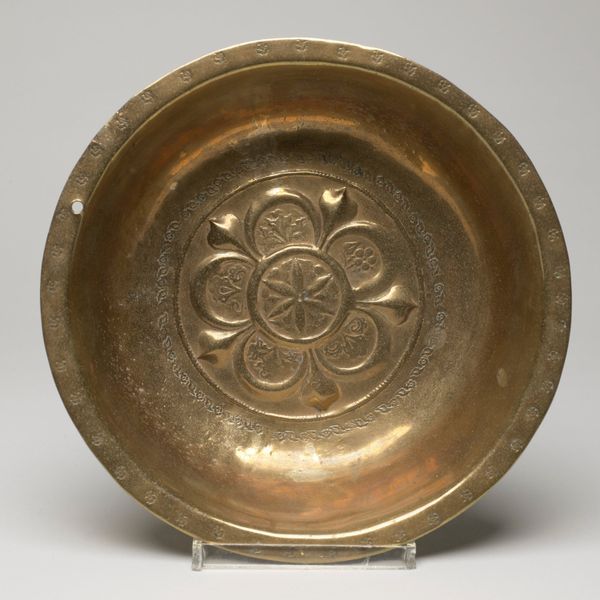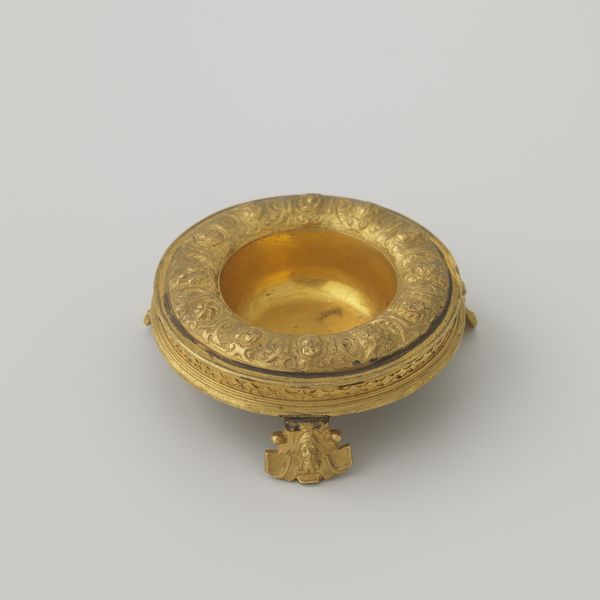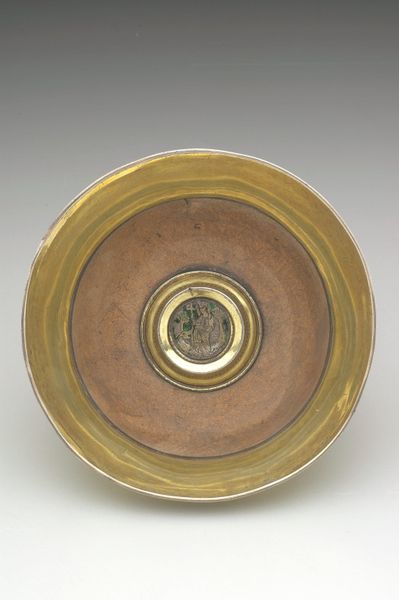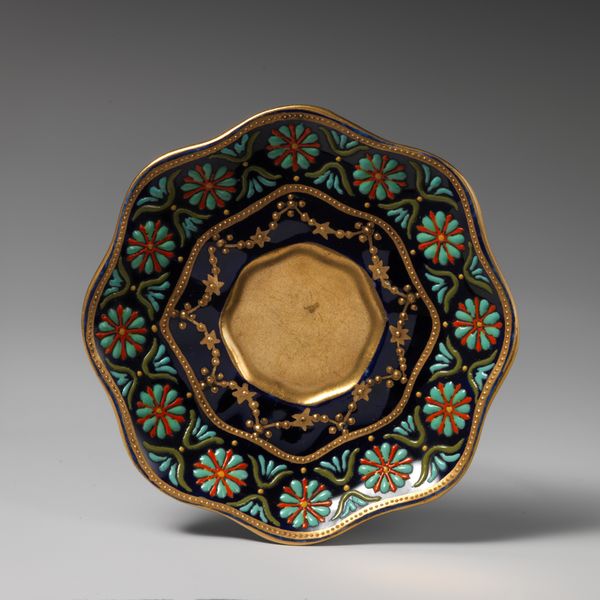
silver, metal, metalwork-silver, sculpture
#
silver
#
baroque
#
metal
#
metalwork-silver
#
sculpture
#
decorative-art
Dimensions: Overall: 10 1/2 x 9 5/16 in. (26.6 x 23.6 cm)
Copyright: Public Domain
Editor: We’re looking at a hexagonal silver dish, made sometime between 1650 and 1699 by Paulus Roth. It's quite ornate, with flowers and swirling details around the rim. It gives off an air of formality, like it belongs in a royal court. What stands out to you about it? Curator: This dish speaks volumes about power and privilege during the Baroque period. Silver wasn’t just a material, it was a declaration of wealth and status. Consider the elaborate ornamentation – the floral motifs, the meticulous detail. What stories do you think these details tell us about the social hierarchy of the time? Editor: It definitely highlights a stark contrast between the elite who could afford such luxury, and the working class. Was there any specific meaning attached to floral patterns during that time? Curator: Absolutely. Flowers weren't just decorative; they often symbolized fertility, prosperity, and even specific virtues. This dish wasn’t merely functional; it was a carefully constructed symbol. I'm wondering what this says about the idea of "decorative art." Do you see this as something inherently separated from "fine art"? Editor: I never thought about that distinction before. It is thought-provoking, because this dish seems to combine artistry and everyday function into something… subversive. Curator: Exactly! Think about who was creating these objects. Craftspeople, often working anonymously, were contributing to a visual language that reinforced societal norms while also perhaps subtly challenging them. The details elevate the seemingly mundane object to a potent vehicle of expression. What did you learn today? Editor: I now understand the role of art and how objects can perpetuate or reinforce the status quo, making these decorative objects essential keys to understanding past power structures.
Comments
No comments
Be the first to comment and join the conversation on the ultimate creative platform.

